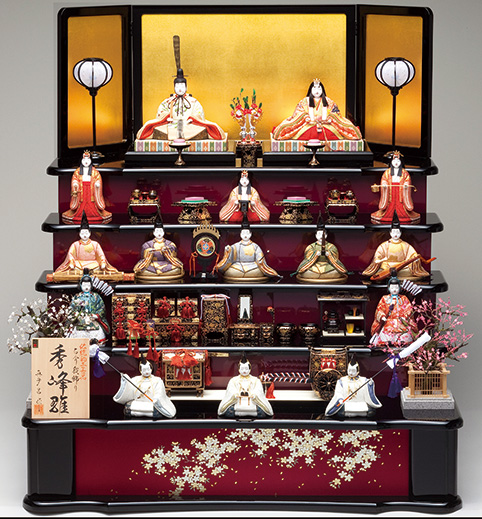
In Japan, family members offer wishes for the health and happiness of girls at the time-honored annual tradition of hina matsuri. The word hina refers to hina ningyou, a pair of dolls clad in kimonos and made of materials such as clay or paper. Every year on March 3rd, house-holds with girl family members display such dolls together with hishi mochi (a pile of thin, diamond-shaped rice cakes) colored in hues such as red, white, and green. Peach blossoms, which are believed to protect girls from evils and misfortunes, are also displayed. Since this event is held when peach blossoms are flowering, it is also known as the "seasonal event of the peach," and is associated in Japan with the spring.
The practice of hina matsuri spread among ordinary people in the middle of the 17th century, a period when common people’s culture flourished in Japan, and has remained popular ever since. Hina ningyou are the best-selling type of dolls in the nation. In some areas, celebrants release paper hina ningyou on rivers as a kind of "sacrifice" for girls, praying that all misfortunes will be "washed away with the stream." This practice is known as nagashi bina ("flowing doll").
Keio Plaza Hotel hosts girls’ doll festival exhibition in February and March every year to celebrate the girls’ day.